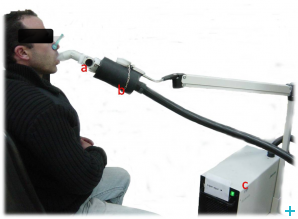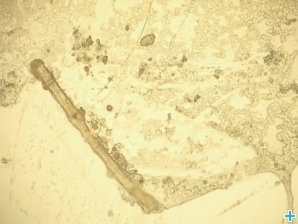Assessing exposure to pollution in industrial workplaces
By Inês Crespo 06.05.2013
In industrial settings, employees may be exposed to high concentrations of metals while working indoors. This can cause respiratory symptoms and lung diseases in the short- and long-term. However, the technology imposed by safety regulations to guarantee an acceptable quality of indoor air does not seem to protect against excessive levels of airborne particulate matter (APM).
The analysis of human breath, in the form of exhaled breath condensate ( EBC), is a method with potential for measuring individuals’ exposure to air pollution, as EBC contains several measurable biomarkers. EBC sampling is particularly suited to workplace assessments, as it is easy to obtain and analyse and is non-invasive for the individual concerned. Further research is necessary however to ensure its reliability as a tool for assessing human exposure to air-borne particles.
Neutrons give insight into workplace air quality
A team of researchers from Portugal's Nuclear and Technological Institute (IST/ITN) investigated exposure levels for workers in two Portuguese lead-processing factories, by measuring APM levels in the workplace and the EBC of the employees. The team collected APM samples from both factories as well as from a “clean” workplace used as a control. Thanks to NMI3 funding, one of the samples could be analysed by instrumental neutron activation analysis (INAA) at the Higher Education Reactor of TU Delft. The remaining samples were analysed by INAA and by particle-induced X-Ray emission at the IST/ITN's Portuguese Research Reactor. The EBC samples were then analysed by inductively coupled plasma mass spectrometry (ICP-MS) and were statistically compared, with each other and with the APM samples, so that the potential of EBC as a bio-indicator could be evaluated.
On the way to healthier workplaces
As expected, the results showed significantly higher levels of APM and more exposure biomarkers in the EBC samples (for several metals) than in the outdoor environment and “clean” workplace. Furthermore, the higher APM concentrations corresponded to higher EBC biomarker concentrations, thus demonstrating that the EBC actually reflects exposure to environmental pollution.
These results make an important contribution to establishing EBC as a matrix suitable for use in workplace exposure assessments. EBC sampling could become extremely useful in programmes to control the inhalation of metals in polluted workplace environments. This opens the way to determining the dose inhaled and its effects on the health of the employees exposed. This information will help improve legislation on maximum exposure levels, thus ensuring better protection for workers.
Original Publication
Félix PM, Almeida SM, Pinheiro T, Sousa J, Franco C, Wolterbeek HT (2013) Assessment of exposure to metals in lead processing industries, Int J Hyg Environ Health. 216(1):17-24
NMI3 thanks Pedro Félix from the Nuclear and Technological Institute (IST/ITN), Portugal, for reviewing this article.

Pedro Félix, Marta Almeida and Maria Teresa Pinheiro from ITN received NMI3 support to perform experiments at the Higher Education Reactor of TU Delft.

